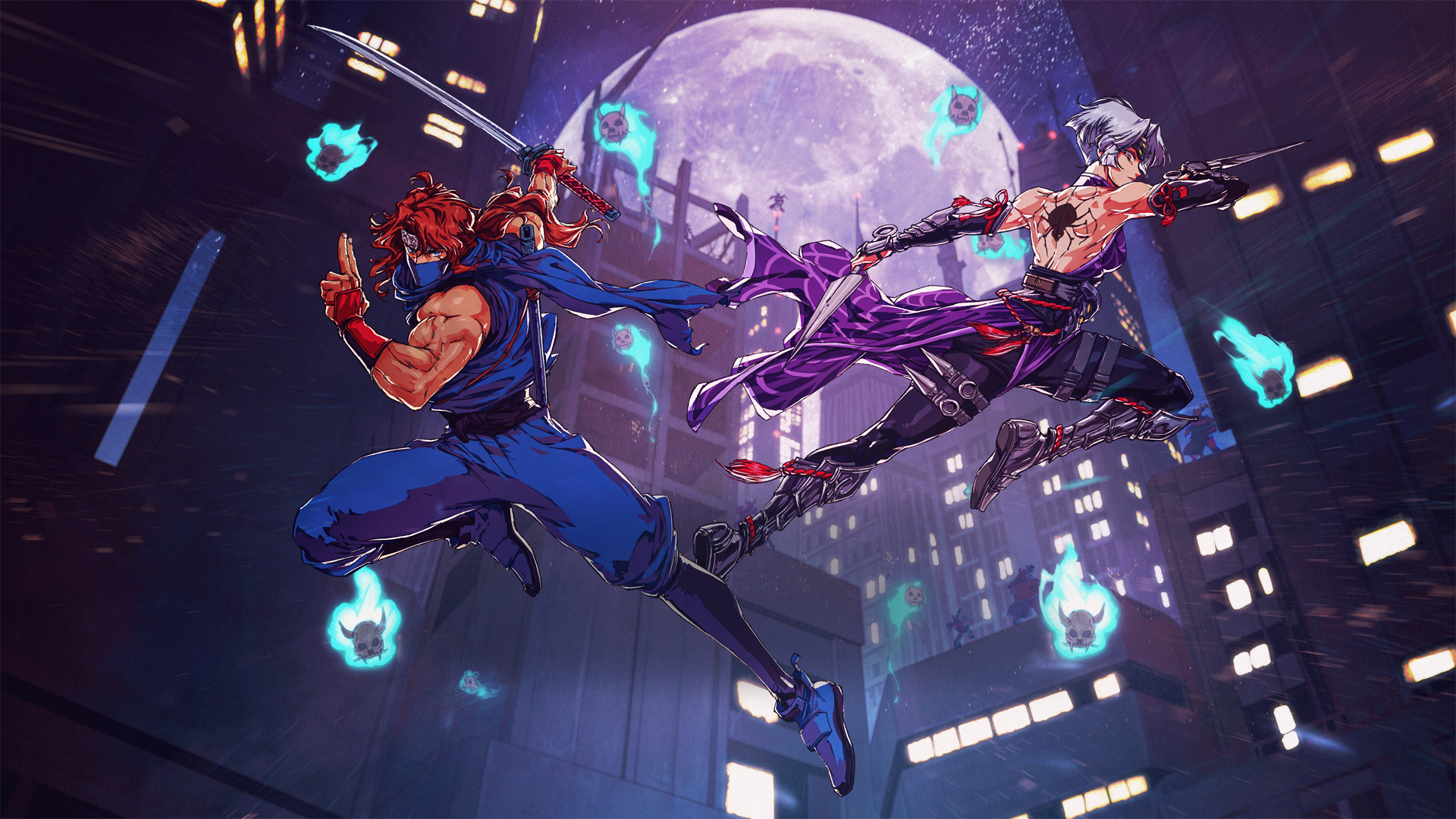
If you asked me on any day of the week, I would tell you that I love Ninja Gaiden, but what I really mean by that is I really love the Team Ninja character action games (and even then I only really like the first two of those). But the NES originals are a bit of a blind spot for me. I’ve played bits and pieces of them, but I’ve never been able to stomach the whole thing due to how frustratingly difficult they are (which can be said of the modern games, but there are less death pits there). And let’s be real, those games are no Castlevania, are they?
However, the announcement of Ninja Gaiden: Ragebound had me hooked from the 20 seconds of gameplay footage we saw when it was announced at The Game Awards; in part due to the associated news that it would be coming courtesy of TMNT: Shredder’s Revenge publisher Dotemu and Blasphemous developer The Game Kitchen. We all saw a snippet of a fast-paced platformer akin to the NES era, with over-the-top gore and style straight out of the excessively overindulgent Tomonobu Itagaki-led 3D games. So I jumped at the chance to head out to Dotemu and get my hands on it.
Rage match
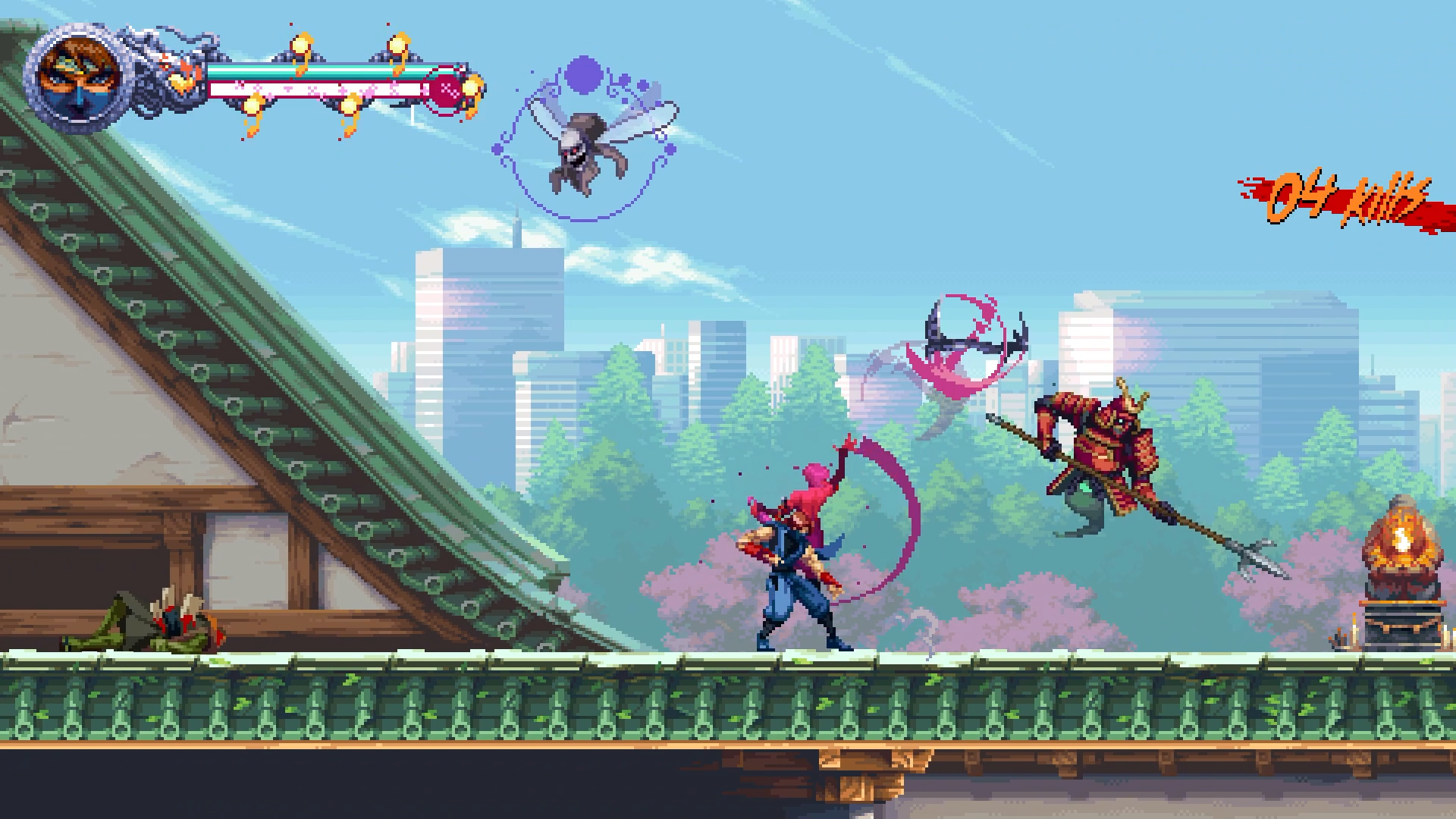
Rather than being the Ninja Gaiden 4 of the NES series or a spin-off title, Ninja Gaiden: Ragebound plants itself directly during the events of Ninja Gaiden (1988). During the original game, Ryu’s pops, Ken (who is now Jo), sends him a message saying, “I'm dead son, go to America.”
Developer: The Game Kitchen
Publisher: Dotemu
Platform(s): PC, PS5, PS4, Xbox Series X/S, Xbox One, Switch
Release date: Summer 2025
But if you’ve played any of the 3D-era games, you’ll know that the millisecond that Ryu steps foot outside of Hayabusa Village, it gets attacked, and somehow this massive ninja clan is completely inept at protecting it without the big man himself hanging out to save it. Luckily this time, Ryu has trained an apprentice named Kenji to keep things together while he goes out to the shops – or away on a world-spanning adventure.
Unsurprisingly, things fall apart instantly as demons besiege Hayabusa Village, and Kenji takes action by fighting off the hordes and going to defeat the source of the demon scourge. Then – for reasons unknown to me, as the demo skipped a few levels of context – Kenji becomes bound with the spirit of Kumori, who is a member of the Black Spider Clan, who were thought to have been extinct. Not only does the reappearance of the Black Spider Clan have interesting lore implications, it’s a great way to bridge the gap between both series.
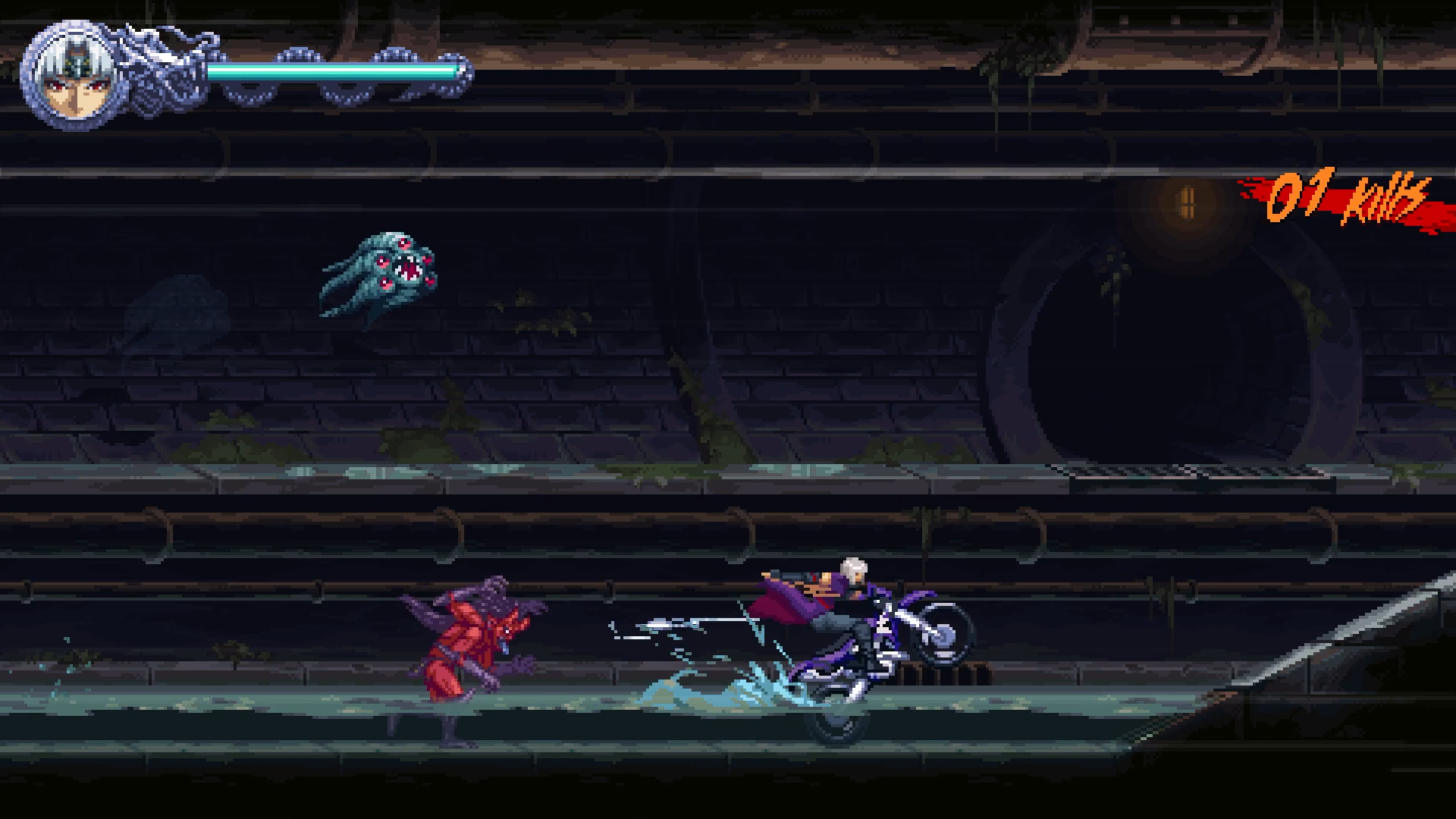
Ninja Gaiden: Ragebound’s announcement was the starting gun for a bit of a Ninja Gaiden resurgence. In the time since we’ve had the excellent Ninja Gaiden 2 Black revealed and released, and then the confirmation of Ninja Gaiden 4. Since the original trilogy takes place years after the 3D games, it has interesting implications for the series (I did see a glimpse of Muramasa in the demo, but his shop was closed in the preview build).
Ragebound is due to release in summer, with Ninja Gaiden 4 coming in the winter. I did ask the game’s director, David Jaumandreu, if Ragebound is going to take the events of the fourth game into account and how it’s avoiding spoiling the upcoming release, but I was sadly given the “we can’t talk about Ninja Gaiden 4” answer. But, I’d hazard to guess it won’t come into play too much since Ryu has a different apprentice in that game.
I’m just Ken
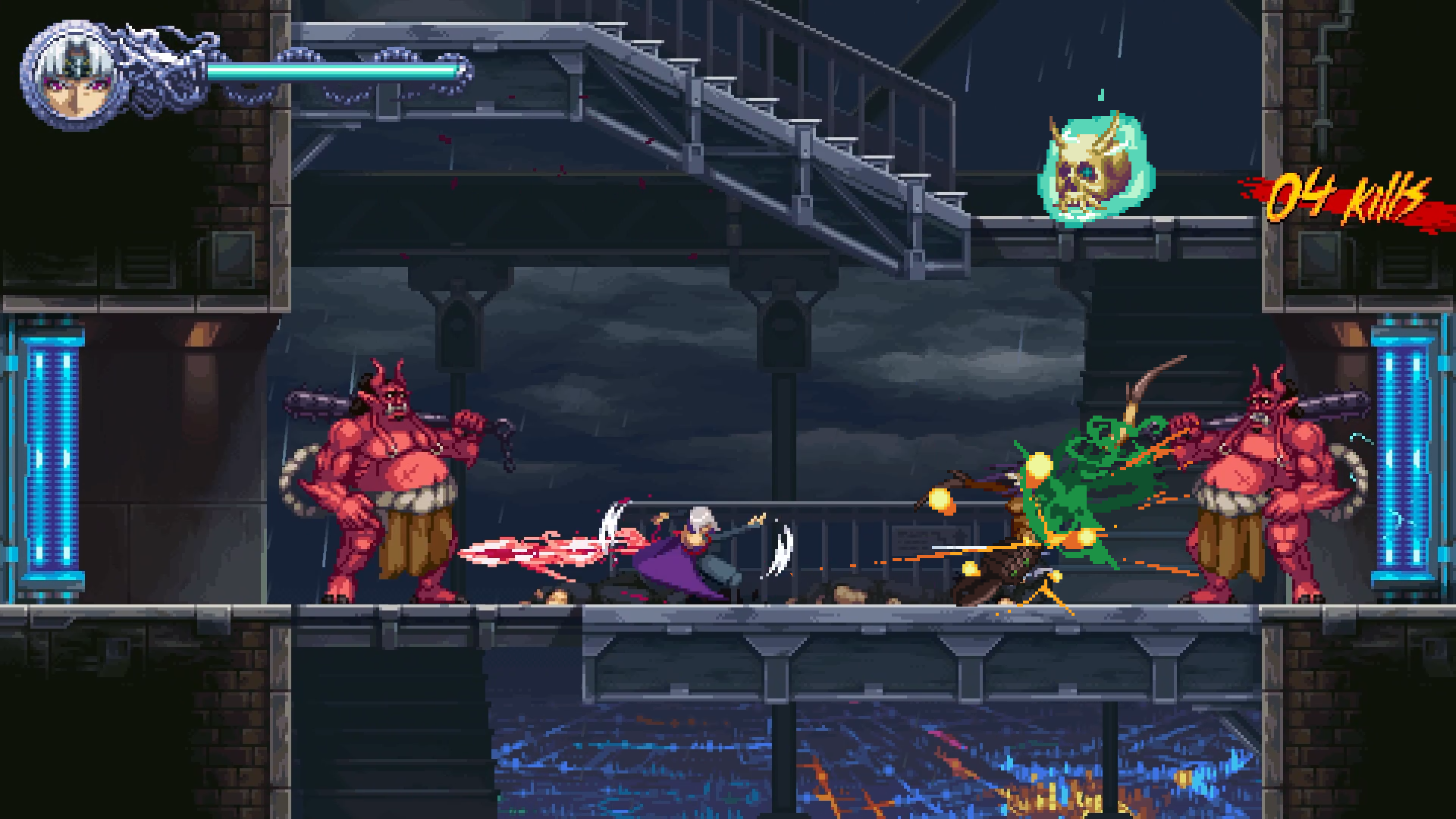
Ragebound feels like a modernized version of the original Ninja Gaiden trilogy. Kenji is fantastic to control thanks to his swift movement, which includes all of the ninja classics like wall jumping, climbing, and fast dodges. This is complemented by lovely animation and sprite work that looks incredibly fluid given the amount of things going on. The highlight of Kenji’s kit is the Guillotine boost, which allows you to perform a slash jump off of enemies or projectiles to either keep your momentum going or allow you to double jump to higher areas (think of Cuphead’s slap parries).
The combat mostly consists of that classic slash-and-dash style where most enemies will succumb to a single hit, which keeps the game at a frantic pace that doesn’t feel obnoxious or overwhelming. And once Kumori is added into the mix, you’re given even more options with a kunai and sickle (which are basically Castlevania’s Knife and Axe, respectively).
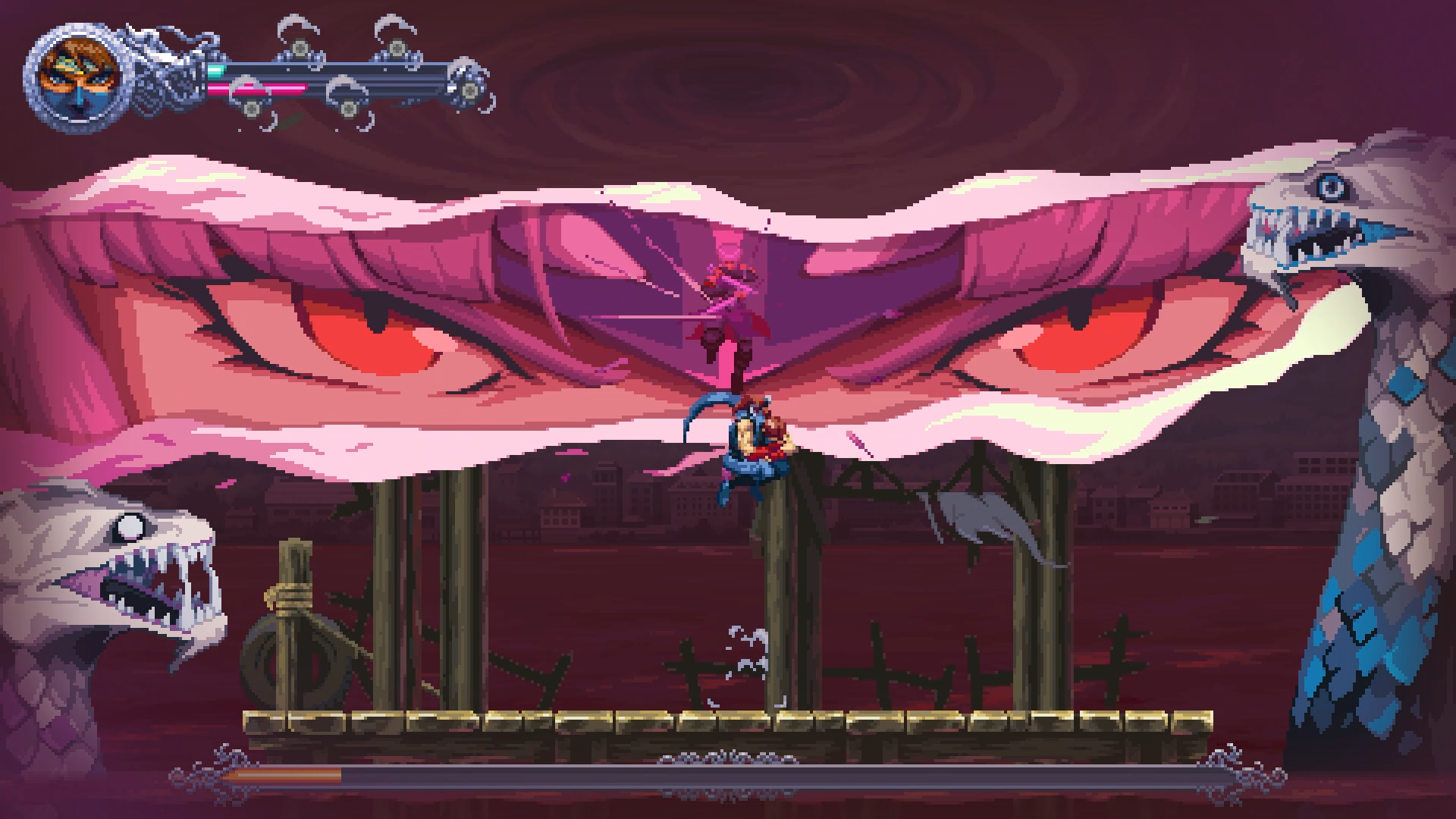
"While it’s difficult, it’s not frustrating. When I lose, it’s because I suck."
However, some enemies are more sturdy, which is where the Hypercharge mechanic comes into play. Some enemies will have an aura around them, and upon defeating them Kenji is put in a Hypercharge state, which allows him to instantly kill any non-boss enemy (alternatively Kenji can use up some of his life bar to put himself into the mode). While this might just sound like a more powerful attack, Hypercharge introduces a new level of awareness to the proceedings; choosing when to use this strike and what enemies to target first almost becomes puzzle-like, while making the right choices allows you to keep up the momentum and breeze through a level.
While Ragebound is supposed to be a bridge between both eras of Ninja Gaiden, the combat is squarely in the wheelhouse of the original. I asked if there was any plan to make the game more combo-heavy like the 3D era games, and Jaumandreu told me that it was conceptualized, but it ended up getting dropped because it didn’t gel with the speed of the classic titles.
I didn’t get to play a ton of Ninja Gaiden: Ragebound, I’ve been dying to get my hands back on it ever since. The game’s fast-paced movement and combat make for a moreish mix that feels like a true modernization of those NES titles. While it’s difficult, it’s not frustrating. When I lose, it’s because I suck at the game, rather than some daft NES-era tricks like jumping 20 feet back into a pit because a bird scraped you. I was already all-in on the 2025 Ninja Gaiden renaissance, and Ragebound feels like it could be the best of the lot.
Want more retro action? Dive into out best NES games list!







